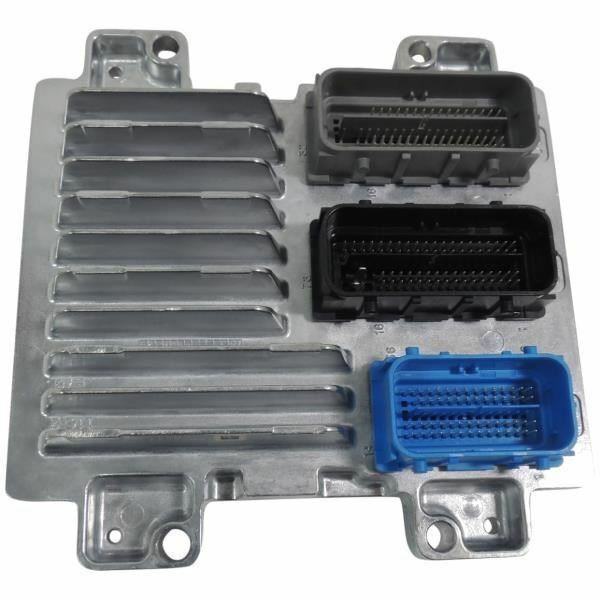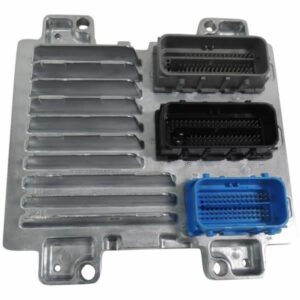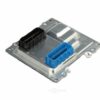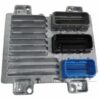If you’re dealing with frustrating and unpredictable engine problems in your GM vehicle, you’ve come to the right place. As a technician with over two decades of experience under the hood, I’ve seen firsthand how a failing Engine Control Module (ECM) can turn a reliable workhorse into a source of constant headaches. From a 2016 Suburban 3500 that won’t start consistently to a Silverado 2500 with a persistent Check Engine light, the ECM is often the root cause. It’s the central computer for your engine, and when its internal circuits degrade, the symptoms can be maddeningly intermittent.
This isn’t just a replacement part; it’s a complete, ready-to-install solution. We take a genuine GM Engine Control Module and flash it with the latest, most stable software from General Motors, specifically matched to your vehicle’s VIN. This critical step means you can bypass the expensive trip to the dealership for programming. You get a component that is truly plug-and-play, designed to restore the performance and reliability you depend on. This is the exact approach I’d take in my own shop to get a customer’s vehicle back on the road quickly and affordably.
Is Your GM Vehicle Showing These Telltale Signs?
A faulty ECM can manifest in numerous ways. If you’re noticing any of the following, it’s a strong indicator that the brain of your engine needs attention. I’ve diagnosed hundreds of vehicles with these exact complaints, which were resolved with a properly programmed module.
- ✔ Erratic engine performance, such as stalling, surging, or rough idling.
- ✔ A persistent Check Engine Light (CEL) that won’t go away.
- ✔ Specific Diagnostic Trouble Codes (DTCs) stored in memory, especially internal processor errors like P0601, P0606, or P0605.
- ✔ Communication errors with other modules, often indicated by U-codes (e.g., U0100 – Lost Communication with ECM/PCM).
- ✔ Poor fuel economy or a noticeable drop in power.
- ✔ The vehicle cranks but refuses to start, or starts intermittently.
- ✔ Issues with automatic transmission shifting, as the ECM communicates directly with the transmission controller.
Case Study: The Ghost in the Express Van
I remember a 2016 Express 3500 work van that came into the bay. The owner was at his wit’s end. The van would randomly stall at traffic lights, but only when it was hot outside. Two other shops had replaced the fuel pump and crank sensor to no avail. When I hooked up my scan tool, I noticed the live data stream from the ECM would freeze just before the stall. There were no hard codes, just a history of communication loss. This is a classic sign of heat-related failure inside the ECM, where solder joints expand and lose contact. We installed a VIN-programmed 2016 Suburban 3500 ECM (the same family of modules) and the problem vanished instantly. The owner was thrilled to have his reliable work van back without throwing more money at the wrong parts.
Your Straightforward ECM Installation Guide
Installing your new ECM is a job most DIYers can handle in their own driveway. The key is that the programming is already done for you. Just follow these simple steps.
- Safety First: Always disconnect the negative terminal from your vehicle’s battery and wait a few minutes to ensure all systems are powered down.
- Locate the Old ECM: On most GM trucks and vans like the Suburban, Silverado, and Express, the ECM is located in the engine compartment, typically on the driver’s side near the fender or firewall.
- Disconnect the Harnesses: Carefully release the locking tabs on the electrical connectors and pull them straight out from the module. Never force them. Inspect the connectors for any corrosion or damage.
- Swap the Modules: Unbolt the old ECM from its mounting bracket. Secure the new, pre-programmed module in its place.
- Reconnect Everything: Firmly plug the electrical harnesses back into the new ECM until they click into place. Reconnect your negative battery terminal.
- Final Steps: In some cases, a security relearn procedure may be required for the vehicle to start. This is a simple process that typically involves turning the key to the ‘ON’ position for 10-15 minutes and can be done without special tools. Instructions are readily available online for your specific model.
Verified to Fit a Wide Range of GM Vehicles
This Engine Control Module is a direct replacement for part number 12643636 and other interchangeable numbers. Please verify your vehicle is on this list. Upon purchase, we will require your VIN to ensure perfect programming.
Buick:
Encore 13-16 (1.4L)
Cadillac:
ELR 14-16 (Gasoline)
Chevrolet:
Cruze 12-16 (Gasoline, 1.4L & VIN P)
Express 2500/3500 Van 16 (4.8L, 6.0L)
Silverado 2500/3500 Pickup 12-16 (6.0L)
Sonic 12-16 (1.4L)
Spark 14-15 (Gasoline)
Suburban 3500 16
Trax 13-16
Volt 11-15 (Gasoline)
GMC:
Savana 2500/3500 Van 16 (4.8L, 6.0L)
Sierra 2500/3500 Pickup 12-16 (6.0L)
Sierra Denali 2500/3500 12-16 (6.0L)
Frequently Asked Questions
Why do you need my VIN?
Your Vehicle Identification Number (VIN) allows us to flash the ECM with the exact software calibration your vehicle requires. This includes specifications for the engine, transmission, emissions equipment, and other factory options, ensuring seamless integration and proper function without a trip to the dealer.
Is this a difficult part to install myself?
For most individuals with basic hand tools, this is a very manageable job. Since the programming is done beforehand, the physical replacement is straightforward. The most common location is easily accessible in the engine bay. See our installation guide above for the basic steps.
Will this fix my car’s specific problem?
This module is a direct solution for issues caused by a failing ECM, such as the symptoms listed above. While it resolves the most common electronic engine problems, it’s always best to have a proper diagnosis performed to rule out other potential causes like faulty sensors or wiring.
What if my original part number is slightly different?
GM often uses several interchangeable part numbers for the same component. Our fitment list includes all known compatible part numbers for this module. As long as your vehicle model and engine match our list, this module will work once programmed to your VIN.
Is any additional programming needed after installation?
No. The core engine and operating software is fully programmed. The only potential step is a simple, tool-free security relearn procedure that pairs the module to your vehicle’s anti-theft system, which you can do yourself in about 15 minutes.



